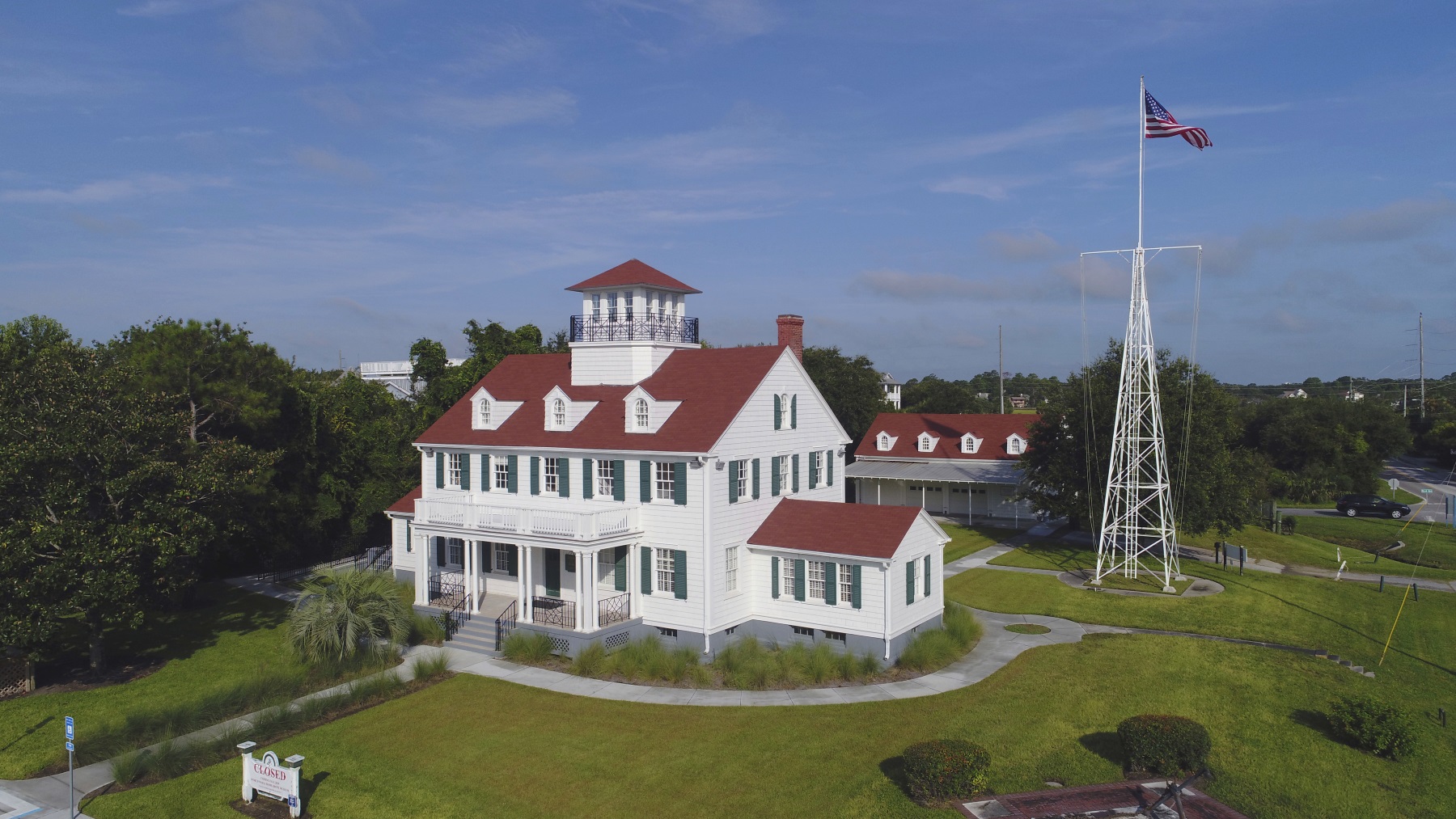Museum To Chronicle How WWII Shaped 1 Georgia Community

The historic former Coast Guard station on St. Simons Island will house the World War II Home Front Museum, which is scheduled to open on the Georgia coast in 2018.
Harlan Hambright / Courtesy of Coastal Georgia Historical Society via AP
Dozens shared childhood memories of mandatory blackouts and the hardships of food rationing. A former Navy officer contributed a detailed account of his training to operate radar aboard ships in the heat of battle. And one resident donated artifacts salvaged from a merchant ship that was torpedoed by a German submarine off the Georgia coast.
World War II had a pervasive and lasting impact on coastal Glynn County, roughly 70 miles south of Savannah. And now the local historical society is entering the home stretch of a yearslong effort to open a museum that tells the story of how the war reshaped daily life in the community.
‘Big And Important Story’
The Coastal Georgia Historical Society raised $3.1 million in the last year to fund its World War II Home Front Museum on St. Simons Island. The museum is scheduled to open next year at the island’s historic former Coast Guard station, which was in charge of shore patrols for German U-boats that lurked off the Georgia coast during the war.
The idea came up years ago when the historical society was revamping its museum at the St. Simons lighthouse and wanted to include an exhibit on World War II. Even at a purely local level, the topic proved too vast.
“We realized when we got to World War II there was such a big and important story,” said Mimi Rogers, museum curator for the historical society. “The people of this area, it means so much to them because many of them have relatives who were part of the home front story. Or they were children at the time and they remember what went on here.”
During the war, 16,000 workers — including 2,000 women — labored at the Brunswick shipyards building the so-called liberty ships used to carry U.S. troops and supplies overseas. Airships that scouted the coast for enemy submarines took off from the neighboring Glynco Naval Air Station. Naval officers received advanced radar training on St. Simons Island.
While the National World War II Museum in New Orleans opened its own home front exhibit last summer, the museum on St. Simons will focus exclusively on how the war affected a single community.
Memories And Artifacts
The historical society has collected roughly 2,000 photos for its exhibits and recorded about 45 interviews with people who lived and worked in Glynn County during the war.
One recalled how government restrictions on buying meat prompted her as a young girl to beg her mother for a lamb chop for Christmas. And a Texas man now in his 90s gave a detailed recollection of the workings inside the radar room used to conduct simulations for training Navy officers. The museum plans to build a replica of that radar room from photographs.
Physical artifacts collected from the war include a life ring and the ship’s bell salvaged from the S.S. Esso Baton Rouge, one of two merchant ships torpedoed by German U-boats off St. Simons Island on April 8, 1942. A total of 22 sailors were killed in the attack, while others were saved by Coast Guard crews from the station that will house the museum.
The museum also acquired one of the wooden boxes used to hold bottles of champagne that were broken across the bow of each liberty ship that launched from Brunswick, along with colorful streamers and pieces of a broken bottle. The local shipyard finished 99 of the ships from 1941 until the war’s end in 1945, and the launches were celebrated by large crowds.
‘Real Sense Of The Community’s Spirit’
“There’s a real sense of the community’s spirit and how involved people felt and how patriotic they felt about helping,” said Sherri Jones, the historical society’s executive director. “There’s so many period stories about these women working 24 hours a day, holding these heavy welding torches. And they loved it. They just felt so a part of helping and supporting those on the front lines.”
Jones and Rogers said the society is still collecting artifacts and interviews as the final exhibits are pieced together.
There’s also still $200,000 left to raise to meet the museum’s $3.3 million goal.
They plan to open the museum in the fall of 2018.





